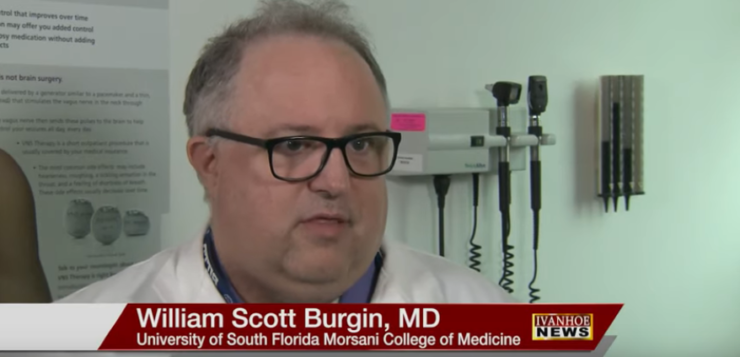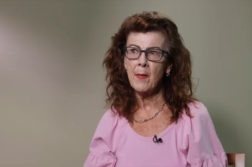William Scott Burgin, MD, Professor & Division Director, Vascular Neurology at the University of South Florida Morsani College of Medicine, talks about the possible benefits of stem cells in the recovery process of stroke patients.
Interview conducted by Ivanhoe Broadcast News in May 2019.
Can you tell us how this came to be and what you think this means for stroke patients?
BURGIN: Well there’s a lot of enthusiasm about stem cells these days. These are cells that are really the precursor for all of the cells in our body. We all come from two cells at one time and then we grow to who we are. The idea has been for many years, could we take stem cells and reprogram them to do what they do to try to aid in the recovery of a number of medical conditions? In this case, what we’re doing is looking at whether stem cells, when given to patients who have had a stroke, can aid in the rate and the degree of recovery after the brain injury that they suffered.
Are the stem cells taken from the patient? How does this work?
BURGIN: Well it depends on the type of study. But stem cells can come from a lot of places. They can come from bone marrow. They can come from tissue. They can be grown in a laboratory. But the idea is that these cells aid in the recovery process. It’s not quite as simple as we’re going to grow you another organ. That’s what we want to think. But the reality is cells put out all kinds of chemicals and other messengers that instruct the body what to do. This is a very, very complex process. The idea is that the stem cells actually are aiding in the recovery process. The cells themselves don’t last forever but the environment that they emit probably aids in recovery of function.
We met a patient who had the stem cell surgery, and she’s doing great now. Do you think that’s an example of how this works?
BURGIN: Well, that’s the million-dollar question. We’re trying to find out what degree stem cells are able to aid in recovery. And there are many different types of stem cells. There are many ways they can be delivered. In the case of the patient that you talked to, those were stem cells that were administered by way of a surgery, implanted in the brain in the location where the brain injury was. But down the road, we’re looking at other ways that this could happen. Potentially these could be administered in the future by intravenous infusion or other yet to be determined techniques.
Does it last once the stem cells are put into the body? Will it last forever or does the patient regress?
BURGIN: We don’t really know yet. Ideally down the road we would like to grow another liver or another heart or something like that. And undoubtedly stem cells will play a role in that. But for right now, we’re just working on the fact that animal studies and preliminary research have shown that in these circumstances it’s very encouraging that using these cells can aid recovery.
So the significance of this for stroke patients is pretty big?
BURGIN: It’s huge. As of right now, we don’t have any technologies, or medication techniques other than conventional physical therapy, occupational speech therapy, which are wonderful. But we don’t have a medication that actually improves people’s extent and course of recovery. So, this would be kicking the door open to an entire new realm of possibilities for people with the most disabling medical condition that we come across in the world.
Is there a certain candidate?
BURGIN: We’re looking for people who are not too soon after their stroke but not too far out either. So, in this case we’re looking for patients who have been somewhere between six and 12 months after they had their stroke, and it needs to be a stroke that’s in the right place and the right size that we think this technique would be helpful for. People have to have a fairly moderate degree of disability, not too bad, not too good. If they’re too good, we can’t tell if we’ve made a difference. I mean, if you’re waterskiing and want to go from two water skis to one water ski, how would I know the difference in that? And for people who are too disabled, it can be very hard for them to go through all the steps. But what we would like to do is eventually get a treatment that works for everybody because while stroke in the United States is the fifth most common cause of death, it is the number one cause of disability. And strokes aren’t just something for older people. It can affect people from birth on up. So, a small improvement, even a small improvement, in how people do could have a huge impact on people’s quality of life.
END OF INTERVIEW
This information is intended for additional research purposes only. It is not to be used as a prescription or advice from Ivanhoe Broadcast News, Inc. or any medical professional interviewed. Ivanhoe Broadcast News, Inc. assumes no responsibility for the depth or accuracy of physician statements. Procedures or medicines apply to different people and medical factors; always consult your physician on medical matters.
If you would like more information, please contact:
Anne Delotto Baier, PR
813-974-3303
Sign up for a free weekly e-mail on Medical Breakthroughs called First to Know by clicking here




